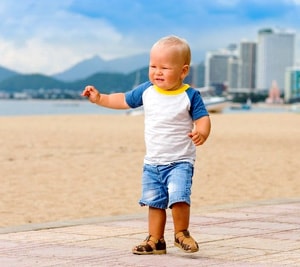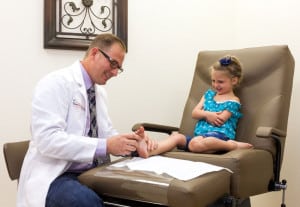Symptoms, Causes, Treatment for Out-Toeing – Femoral retroversion
Out-toeing is the common name used for a condition known as femoral retroversion. This condition is diagnosed in childhood, and is characterized by the unusual “duck feet” posture and walk that the child develops.
Symptoms
It is easily recognizable because the child develops an unusual walk. Their feet are turned out while they walk, and this makes it difficult for them to stand and move normally. It is important that the condition be treated early because it can cause pain and long-term disability as the child grows older, because of the pressure that it puts on the joints around the feet, hips, and legs.
Causes
This gait condition is not as common as in-toeing, but it does affect a large number of children. It can be caused by a number of different issues, including spending a lot of time in a given position in the womb, abnormal growth during early childhood, and also underlying neurological issues. The treatment for out-toeing will depend on the cause, but it is something that can be managed.
Treatment Options
How this condition can be successfully managed. Usually, it will resolve itself before the child reaches the age of three. Most doctors would recommend that parents take video footage of their child walking, and review this footage every few months to compare their child’s gait. If the out toeing was due to a persistent fetal position, or the fact that the bones in the body were growing at different rates, then it should resolve itself over time.
If it does not resolve itself then intervention may be required.
Treatment options for in and out-toeing are limited. There are conservative traditional treatments such as physiotherapy and shoe inserts (Custom orthotics) that do help control and provide support foot structures. Orthotics are not a cure but may help in correcting mild out toeing that can be contributed to laxity of ligaments of the foot and ankle. Braces do not usually help with the condition, although they may if it is a muscular issue causing the unusual gait.
- In some cases, the doctors may recommend surgery to alter the bone that is causing your child’s gait to be unusual, if conservative treatment has failed and once your child has reached skeletal maturity.
- In some cases, a child has one foot pointing outwards, and the other pointing forwards. This can be a sign of other neurological conditions.
It is important that the condition be treated before the child reaches the age of ten as persistent out-toeing can place stress on the knee joint and lead to other problems. Children that have out-toeing caused by femoral retroversion (a condition where the thighbone is angled backwards compared to the hip joint), can be at increased risk of developing childhood arthritis or a “slipped capital femoral epiphysis.” This is more common in children who are obese, so proper weight management from an early age is particularly important if your child is displaying symptoms of out toeing or in toeing. If you have concerns about your child’s weight, talk to a pediatrician about weight issues.
Other Warning Signs That May Require Other Treatment
If your child takes longer to start to walk than expected, persists with “toe walking” beyond the age of three, starts limping or complaining of pain, or is showing developmental delays in other areas of their life then it is important that you seek professional medical advice.
Every child is different, and a lot of gait issues will resolve themselves, as the child gets older. If the (out toeing) is caused by flat feet or by hip contracture, then it will get better on its own, but it is, still worth having a professional examine your child to rule out other issues.
In rare cases of out toeing being caused by bone or joint issues, early intervention can help to treat the problem and to ensure that the child’s risk of developing arthritis or childhood hip conditions is minimized. Visit Preferred Foot & Ankle Specialist, Dr. Mikkel Jarman, DPM, Phoenix Podiatrist.


